Back to blog
12 MIN READ
User Retention Metrics - Top 6 KPIs to Track and Improve
PUBLISHED
19 January, 2025

Product Analytics Expert
User retention metrics helps you understand how well your web product keeps users coming back. They tell you whether users are finding value in your product or leaving after a quick visit.
For mobile or web apps, retention is a make-or-break factor. It’s not enough to attract users—you need to keep them engaged and coming back. Retention metrics help you identify where users drop off and what’s working in your product.
By tracking and analyzing these metrics, Product Managers and B2B Marketers can make smarter decisions to reduce churn, improve user experiences, and drive growth.
Ready to dive in and learn how retention metrics can transform your web product? Let’s explore the key metrics, how to measure them, and actionable ways to improve user retention.
Summary - Top 6 user retention metrics
| Metric | Details |
|---|---|
| Day 1, Day 7, Day 30 retention rates | Measure returning users at 1, 7, and 30 days post-onboarding. |
| Churn rate | Tracks users leaving; high churn indicates issues in value delivery. |
| Customer retention rate (CRR) | Percentage of users retained over time; reflects satisfaction and loyalty. |
| Customer lifetime value (CLTV) | Total revenue per user over their lifespan; retention boosts CLTV. |
| Activation rate | Measures users completing actions revealing core value; indicates onboarding success. |
| Engagement metrics | Tracks active users via DAU, MAU, Stickiness; reflects ongoing engagement. |
Key user retention metrics to track and measure
1. Day 1, Day 7, Day 30 retention rates
These metrics measure the percentage of users who return to your product after 1, 7, or 30 days. Each milestone offers unique insights into how effectively your product retains users.
Day 1 retention rate reflects the success of your onboarding experience. If users don’t return after the first day, it’s a sign they didn’t see immediate value or faced friction during their first interaction.
Day 7 retention rate shows whether users find your product useful enough to integrate into their routine. For web products, it indicates mid-term engagement—critical for tools like project management apps or SaaS platforms.
Day 30 retention rate measures long-term adoption. If users are still active after a month, they likely see consistent value in your product. This is especially important for subscription-based web products.
Together, these rates form a retention funnel, helping you understand when and why users drop off. For example, a high Day 1 retention paired with low Day 7 retention might indicate an onboarding issue that creates short-term excitement but lacks sustained engagement.
Use cohort analysis to compare how different user groups perform at each stage. Tools like UXCam’s cohort analytics can help you pinpoint when and why users disengage.
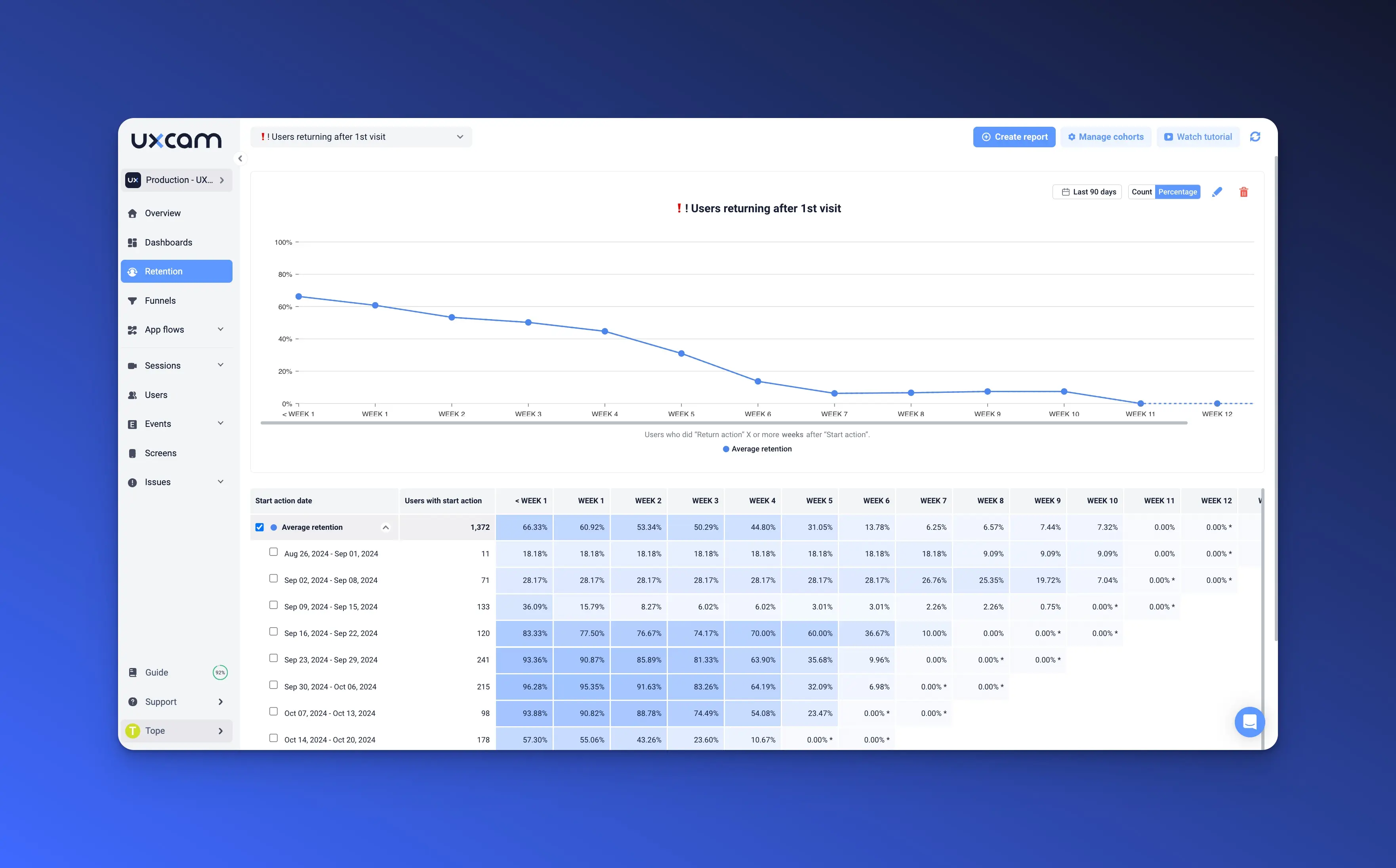
2. Churn Rate
Churn rate measures the percentage of users who stop using your product within a given timeframe. High churn rates directly impact your retention metrics by showing where users are falling through the cracks.
While retention rates show who stays, churn reveals who leaves—and why. It’s a critical indicator of your product’s ability to deliver ongoing value and meet user expectations.
For example, freemium models often see higher churn rates as users explore the product without committing to paid features. Paid subscription models, on the other hand, tend to have lower churn but rely on consistent feature value to maintain engagement.
Track churn alongside other metrics like feature adoption or engagement. If churn is high among free users, focus on optimizing the conversion path to paid tiers. If paid users churn, revisit your value delivery or support systems.
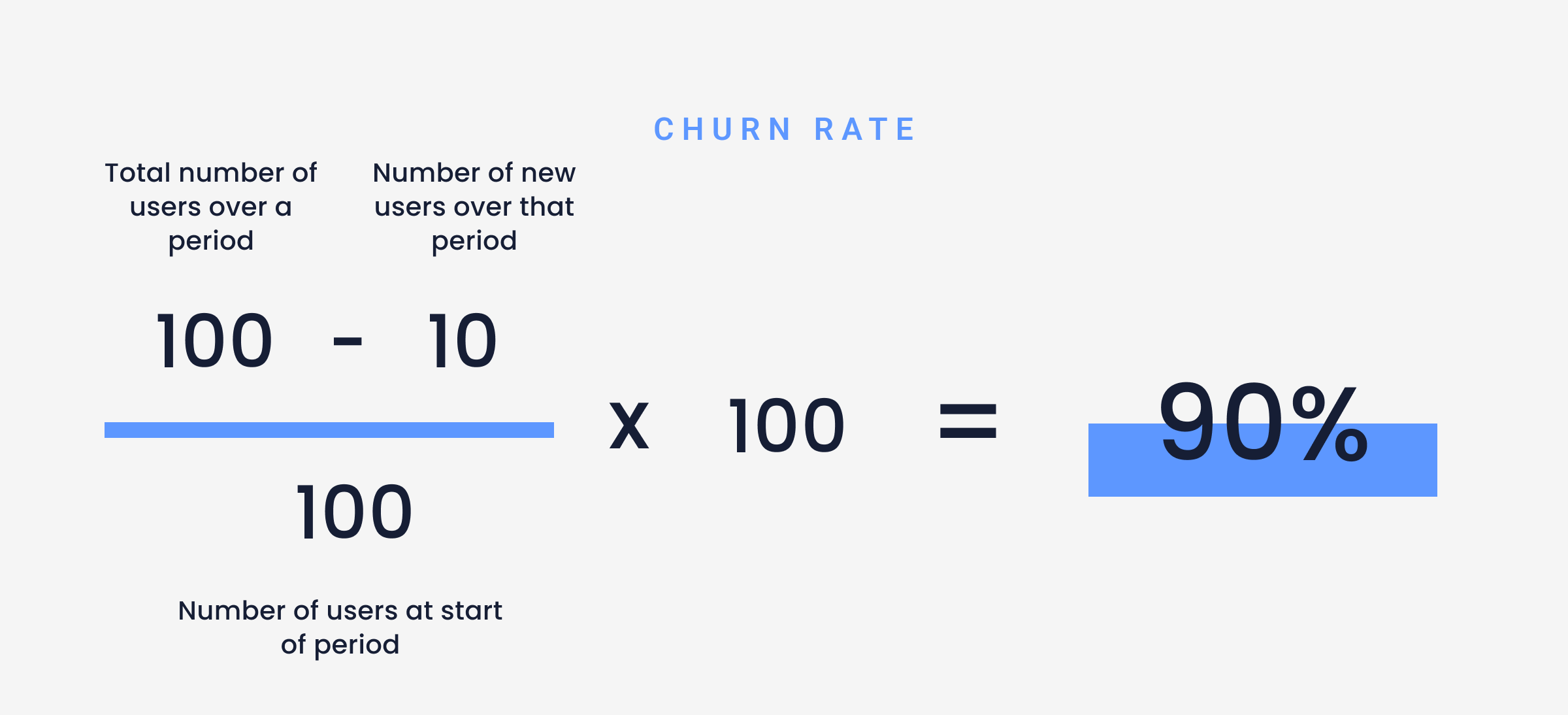

3. Customer retention rate (CRR)
Customer Retention Rate (CRR) measures the percentage of users who stick with your web product over a specific period. It’s a simple yet powerful metric to gauge your product’s ability to retain users and sustain engagement.
To calculate CRR, start by determining the number of customers you had at the beginning of a period, subtract the new customers acquired during that time, and compare it to the number of customers at the end.
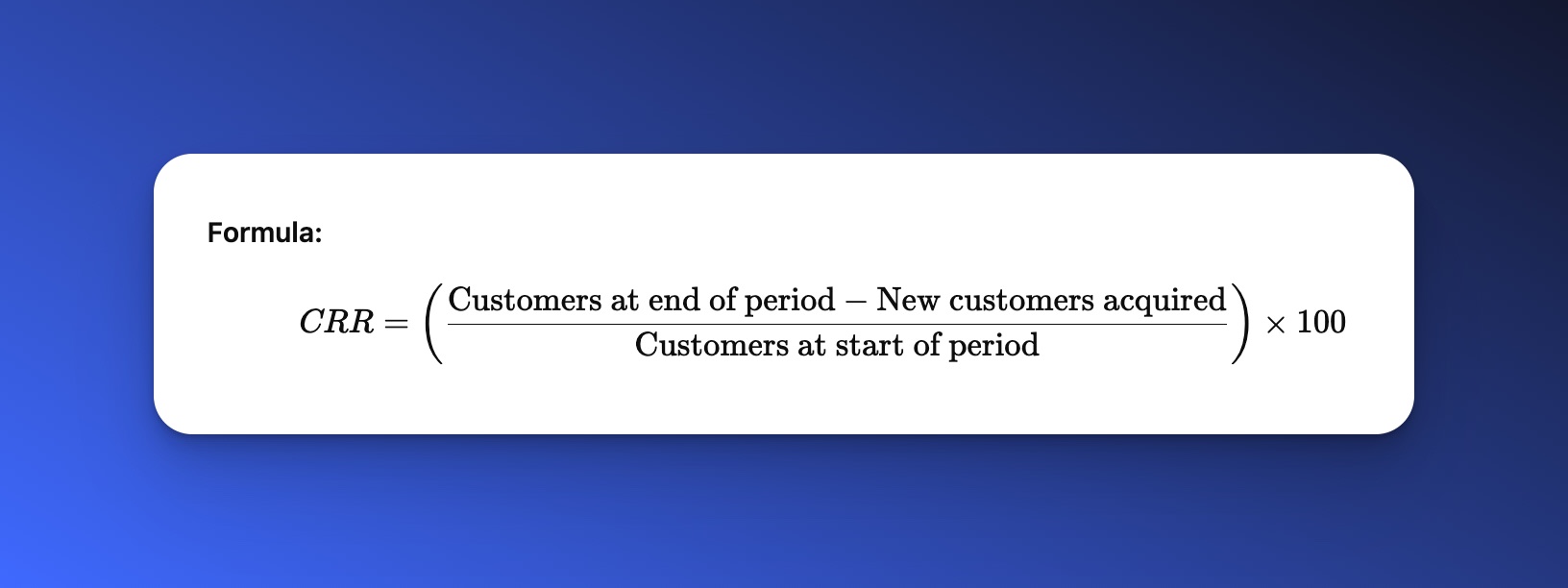

For example, if you started the month with 1,000 users, acquired 150 new ones, and ended with 950, your CRR would be:


An 80% CRR shows that most of your existing users are finding ongoing value in your product.
CRR directly reflects user satisfaction and the stickiness of your web product. A declining CRR could point to issues like poor user experience, lack of feature adoption, or ineffective communication.
Monitor CRR across different user segments, such as paid vs. freemium users or acquisition channels. If CRR is higher for certain cohorts, double down on what’s working to retain them.
4. Customer lifetime value (CLTV)
Customer Lifetime Value (CLTV) estimates the total revenue you can expect from a single user throughout their time with your web product. It’s a critical retention metric, especially for B2B SaaS companies, where long-term relationships drive growth.
High CLTV is a sign of strong user retention and satisfaction. The longer users stay with your product, the more revenue they generate—and the more likely they are to refer others.
For web-based SaaS products, retention directly impacts CLTV. Even small improvements in retention rates can lead to significant increases in revenue over time.
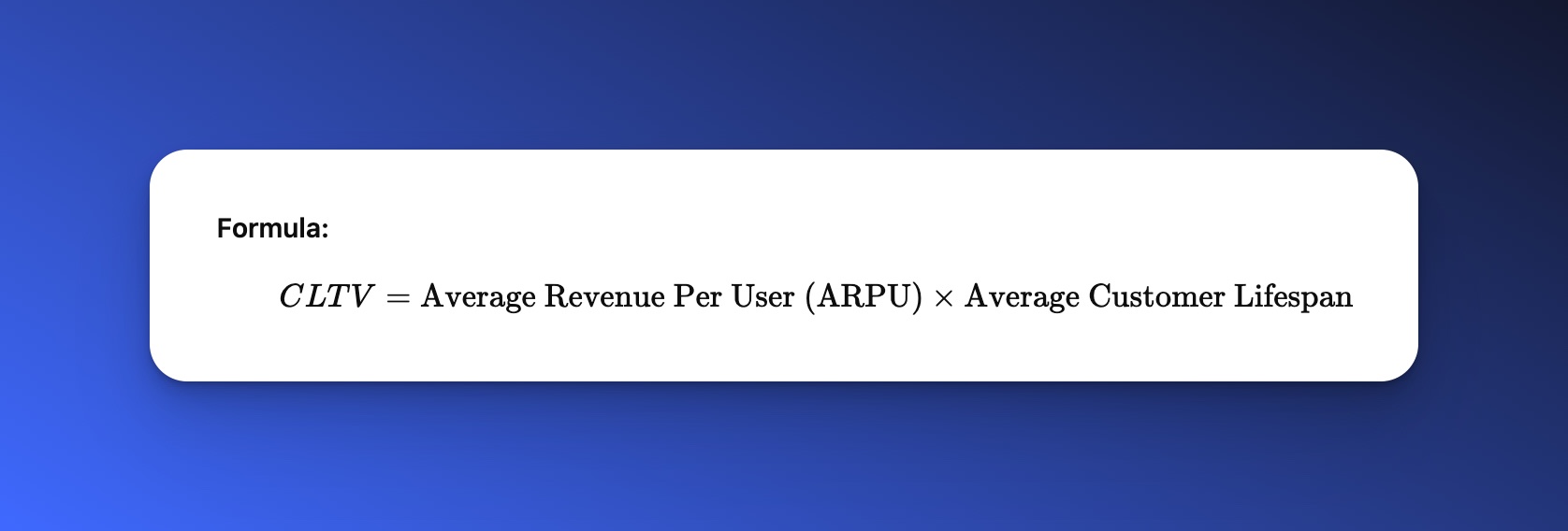

For instance, if your average user pays $50 per month and stays for 24 months, your CLTV is $1,200.
Use CLTV to identify high-value users and focus retention efforts on them. For example, analyze which features your longest-tenured customers engage with most and promote those features to at-risk users.
To effectively use Customer Lifetime Value (CLTV) in your retention strategy, start by identifying the customer segments that generate the most value. Focus your retention efforts on these high-value users, ensuring their needs are met and expectations exceeded.
Promote features and benefits that resonate with these customers to encourage long-term engagement. When users consistently find value in your product, they are more likely to remain loyal and contribute to higher CLTV.
Even small reductions in churn rates can have a significant impact on CLTV. Proactively address churn by identifying patterns in user behavior and targeting at-risk customers before they leave.
Behavior analytics tools like UXCam can help you understand the actions of your most valuable users. By analyzing their usage patterns, you can refine your strategy to replicate their success across a broader audience, driving long-term retention and growth.
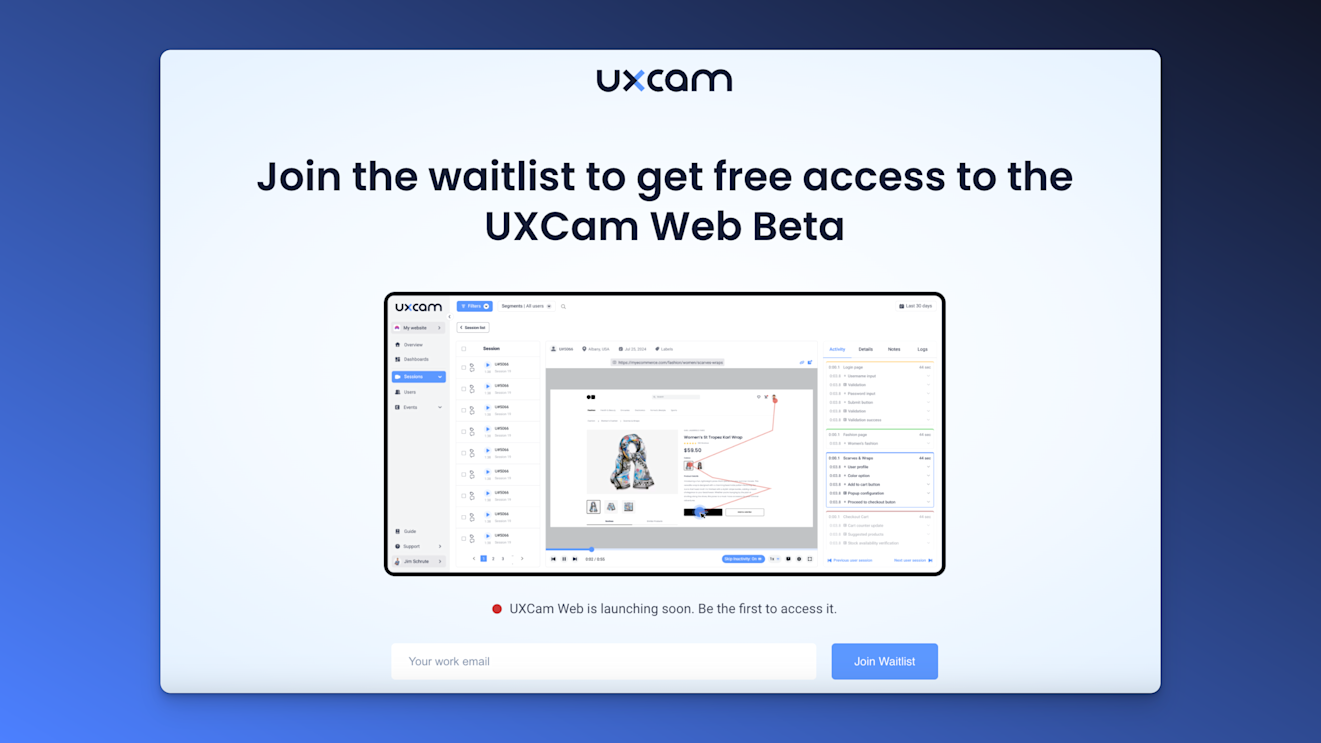

5. Activation rate
Activation Rate tracks the percentage of users who complete a specific action that signals they’ve experienced the core value of your product. This metric is often tied to your onboarding process.
For example, in a project management web app, activation might mean creating their first project or inviting team members. These actions indicate that users are starting to connect with your product's value.
A high Activation Rate suggests your onboarding is effective at guiding users to value quickly. A low rate, on the other hand, highlights potential friction or unclear value propositions.
Define your product’s activation milestones clearly. Use analytics to track drop-offs during onboarding and refine the process to eliminate hurdles. Tools like UXCam’s session replay can help you understand why users abandon activation steps.
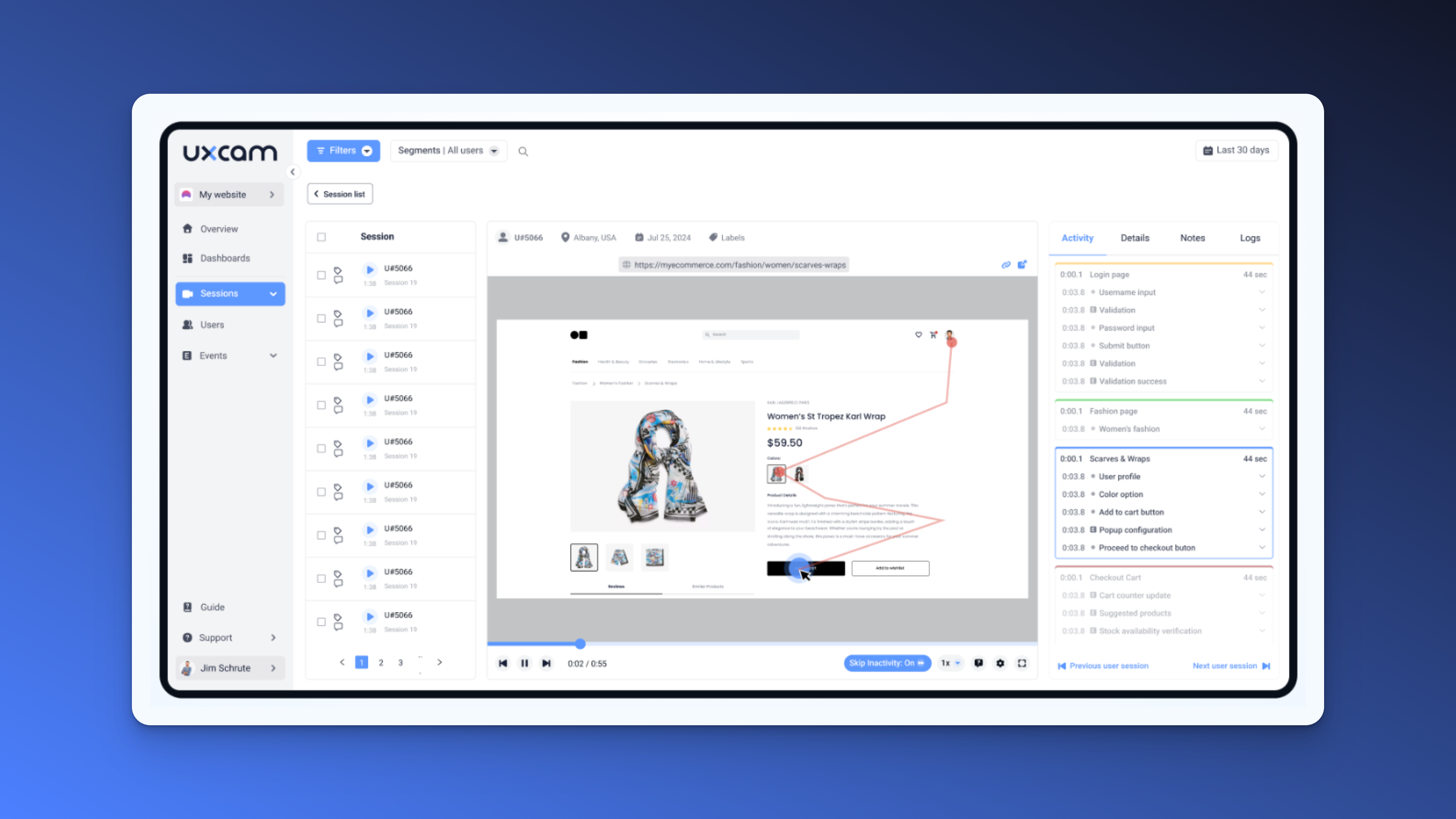

6. Engagement metrics
Engagement Metrics measure how actively users interact with your product over time. Unlike Activation Rate, which focuses on the initial "aha moment," engagement metrics track ongoing behavior.
Key engagement metrics for web products include:
Daily Active Users (DAU): Number of users engaging with your product daily.
Monthly Active Users (MAU): Number of unique users active within a month.
Stickiness Ratio: Calculated as DAU divided by MAU. A higher ratio indicates consistent, frequent use.
These metrics reveal how well your product fits into users' daily workflows. For example, a SaaS platform with a high stickiness ratio shows strong habitual use, which directly correlates with retention.
If engagement metrics are low, analyze which features drive the most value and promote them. Behavioral analytics can highlight which parts of your product users engage with most—and which areas need improvement.
How to measure user retention
Measuring user retention isn’t just about tracking numbers—it’s about uncovering how well your web product delivers value to users over time. By following a structured approach, you can identify what’s working, address pain points, and build strategies to keep users engaged. Here’s a detailed step-by-step guide to help you measure retention effectively:
Step 1 - Define user retention goals based on your product’s value proposition
Retention starts with a clear understanding of your product’s value. What does success look like for your users? Retention goals should align with the specific outcomes your product helps users achieve.
For example:
A project management app might define retention as users creating their first project within a week.
An e-commerce platform might measure retention based on repeat purchases within the first 30 days.
These goals set the foundation for measuring meaningful user engagement and retention.
Collaborate with your team to define key success milestones that directly reflect your product’s value proposition.
Step 2 - Segment users by acquisition channel, demographics, or behavior
Not all users are the same. Some stick around longer based on where they came from, their demographics, or how they interact with your product. By segmenting users, you can identify which groups are more likely to retain and why.
For instance:
Users acquired via organic search often have higher intent and better retention rates compared to paid campaigns.
Behavior-based segmentation (e.g., users who complete onboarding vs. those who don’t) can reveal gaps in your user journey.
It highlights which acquisition channels and strategies drive long-term users, enabling you to optimize your marketing and onboarding efforts.
Use analytics tool like UXCam that offer granular segmentation capabilities to create detailed segments, such as users grouped by geographic region, feature usage, or subscription tier.
Step 3 - Leverage cohort analysis to view retention patterns over time
Cohort analysis takes segmentation one step further. By grouping users based on shared characteristics, such as their signup date, you can analyze how retention rates vary over time and across different cohorts.
If users who signed up in January show a 50% retention rate after 30 days, while February’s cohort drops to 35%, there might have been a change in your onboarding flow or feature set that impacted engagement.
Cohort analysis doesn’t just tell you how many users you retain—it helps you understand why retention rates fluctuate, empowering you to make targeted improvements.
Tools like UXCam’s cohort analysis make it easy to visualize and compare retention patterns, helping you prioritize improvements for specific user groups.
Step 4 - Identify key touchpoints and milestones in the user journey
Every user journey has pivotal moments that determine whether a user sticks around or churns. These milestones might include:
Completing onboarding.
Using a core feature for the first time.
Achieving an engagement goal, like inviting teammates or creating a project.
Users who reach these milestones are significantly more likely to stay engaged. Identifying and optimizing these touchpoints ensures more users reach value faster.
For example, in a project management app, a critical milestone might be creating and assigning their first task. If users fail to reach this step, they’re likely to churn.
Map out your entire user journey and analyze where users drop off. Use funnel analytics to refine the flow and remove friction at key moments.
What is a good user retention rate?
User retention rates vary significantly across industries and product types. Below is a table summarizing average retention rates for various sectors:
| Industry | Average Retention Rate |
|---|---|
| Media companies | 84% |
| Professional services | 84% |
| Automotive & transportation | 83% |
| Insurance | 83% |
| IT Services | 81% |
| Construction & engineering | 80% |
| Financial eervices | 78% |
| Telecommunications | 78% |
| Healthcare | 77% |
| Banking | 75% |
| Hospitality | 55% |
| E-commerce | 30% |
Source: Shopify
It's important to note that these benchmarks can vary based on factors such as business models, target markets, and specific product offerings. For instance, within the SaaS industry, retention rates can differ between B2B and B2C companies, as well as between freemium and enterprise models. Therefore, when evaluating your product's performance, it's crucial to consider the specific context of your industry and business model.
How to analyze and improve retention rate
Improving retention rates starts with understanding what keeps users engaged and where they drop off. By leveraging product analytics, you can identify trends, remove friction, and create experiences that encourage long-term loyalty. Here’s how to dive deep into your data:
Best practices for analyzing retention Rate
Use cohort analysis to identify patterns and trends: Cohort analysis helps you track user groups over time, such as users who signed up during a specific week or through a particular channel. It reveals retention patterns and highlights what’s working for certain cohorts. If users acquired through email campaigns retain better than those from paid ads, you can focus your budget on email campaigns or refine your ad targeting. Use cohort analysis to pinpoint key moments that influence retention, such as successful onboarding or feature adoption.
Leverage behavioral analytics to map user actions: Behavioral analytics show how users interact with your product—what features they use, how often they return, and what actions correlate with retention. These insights help you identify behaviors that lead to long-term engagement, like completing onboarding or using advanced features. If users who upload files within the first week are more likely to stay, you can optimize onboarding to emphasize this action. Use behavioral analytics to segment users by engagement level and tailor retention strategies for each group.
Use heatmaps and session replays to find friction points: Heatmaps and session replays provide visual insights into how users navigate your product. They reveal areas where users hesitate, encounter difficulties, or abandon tasks. Understanding friction points helps you refine the user experience and remove barriers to retention. If users frequently abandon a multi-step form, session replays can show where they lose interest or encounter confusion, enabling you to simplify the process. Use UXCam’s session replays to dive into specific user sessions and identify opportunities to improve the flow.
Best practices for improving retention rates
Run A/B tests to Optimize Engagement: A/B testing allows you to experiment with different designs, messaging, or features to see what resonates most with your users. Test different onboarding flows to find which one leads to higher Day 7 retention rates. Use A/B testing to validate changes before rolling them out to your entire user base.
Personalize User Experiences: Personalization creates tailored experiences based on user preferences, behavior, or demographics. Personalized experiences make users feel valued and increase the likelihood they’ll stick around. Segment users and create targeted messaging or product walkthroughs that resonate with each group, then recommend specific features or workflows to users based on their industry or past behavior.
UXCam’s session replays and behavioral analytics give you the power to see your product through your users’ eyes. By uncovering friction points and tracking key actions, you can make data-driven decisions that boost retention.
Strategies to boost user retention in web products
Retaining users isn’t just about building a great product—it’s about creating an experience that continuously delivers value. By focusing on key strategies like onboarding, feature adoption, and feedback collection, you can keep users engaged and reduce churn.
1. Onboarding Optimization
A strong onboarding experience sets the tone for user retention. Simplify the process and guide users to quickly discover your product’s core value.
First impressions are critical. If users can’t understand how to benefit from your product early on, they’re unlikely to stick around.
Use welcome tours or interactive guides to walk users through essential steps, such as setting up their profile or completing their first task. A project management app might show users how to create their first project in just a few clicks.
Use analytics tools like UXCam to identify friction points during onboarding and refine the flow to eliminate unnecessary steps.
2. Feature adoption tracking
Encouraging users to explore and adopt key features ensures they experience the full value of your product. Users who engage with core or advanced features are more likely to become loyal, long-term customers.
In a SaaS tool, in-app messaging can highlight advanced features like automation or integrations, encouraging users to try them. For example, “Connect your calendar to streamline your workflow!”
Track feature usage with product analytics to identify which features drive the highest retention, and promote them through tutorials or reminders.
3. Retention campaigns
Stay top of mind with targeted communication that re-engages users and encourages them to return. Even engaged users can get distracted. Proactive campaigns keep your product relevant and remind users of its value.
Use personalized emails, in-app notifications, or push messages to nudge users back into action. For example, “You’ve completed 50% of your project—let’s finish it together!”
Segment users based on activity levels and tailor your campaigns for each group, such as inactive users or those who haven’t explored certain features.
4. Continuous feedback collection
Retention is easier when you understand what users need and where they’re struggling. Use surveys and analytics to collect ongoing feedback and make improvements.
Addressing user pain points in real-time shows you’re listening, builds trust, and enhances the overall experience.
After onboarding, send a quick survey asking, “What could we do better?” Pair survey insights with analytics to uncover deeper trends.
Use feedback tools to identify recurring issues and prioritize improvements that align with user needs.
Conclusion: Turning retention metrics into product success
Tracking and improving user retention is key to building a successful web product. Retention metrics don’t just show you who stays—they reveal why users stay and where you can improve. By understanding these insights, you can create a product that keeps users engaged and loyal.
Product analytics play a vital role in this process. They turn raw data into actionable insights, helping you identify trends, optimize user journeys, and make data-driven decisions that boost retention.
To take your retention strategies to the next level, try UXCam for web for free today. With features like cohort analysis, session replays, and behavioral insights, UXCam empowers you to understand your users better and build a product they’ll love to stick with.
Start analyzing, optimizing, and transforming retention into long-term success today!
You might also be interested in these;
UX Insights Examples - Ideas to Improve User Retention
How to Conduct Cohort Retention Analysis with UXCam How to run an effective churn cohort analysis with UXCam
Behavioral cohort analysis - How to use them to improve UX
Top 9 mobile app retention strategies to enhance stickiness
AUTHOR

Tope Longe
Product Analytics Expert
Ardent technophile exploring the world of mobile app product management at UXCam.
What’s UXCam?
Related articles
App Analytics
Mobile App Tracking: Practical Guide & Best Tools [2026]
The best tracking tools for mobile...

Jonas Kurzweg
Product Analytics Expert
App Analytics
Top Analytics SDKs 2026
Pick the right analytics SDKs to improve your app's...

Jonas Kurzweg
Product Analytics Expert
Product best practices
8 Best UX Analytics Tools and Software We’ve Tested 2025
A good UX design is key when it comes to user satisfaction. Learn about five of the best UX analytics tools you can use to get valuable insights about user...

Jonas Kurzweg
Product Analytics Expert


